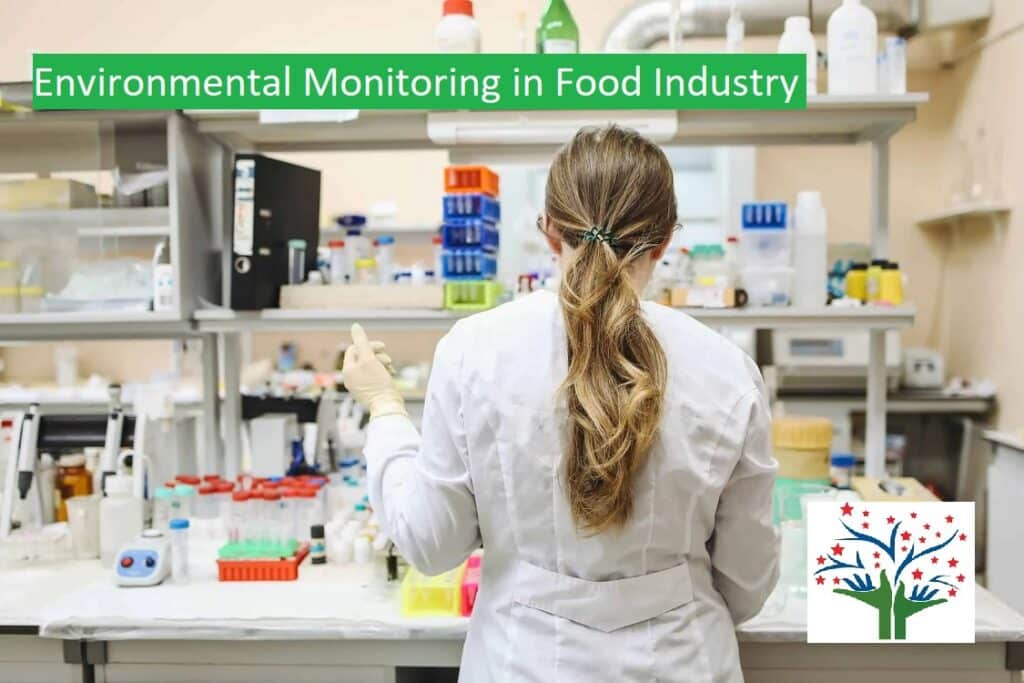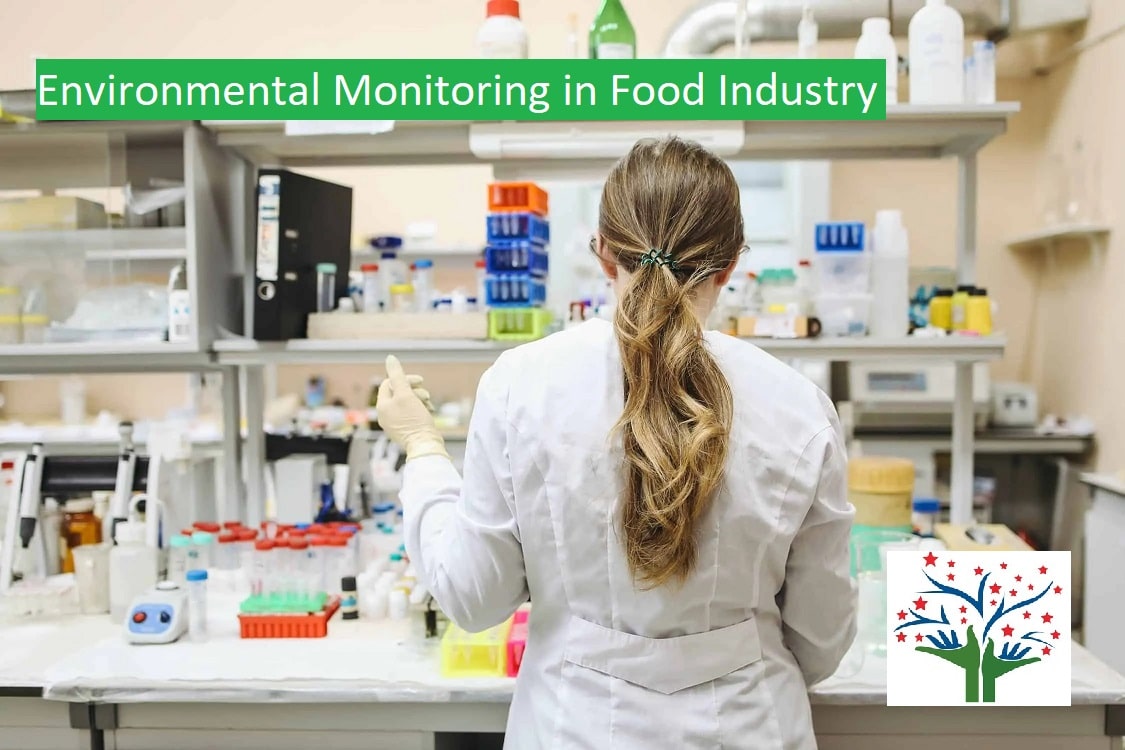Environmental monitoring plays a crucial role in the food industry to ensure the safety and quality of food products. It involves the systematic collection, analysis, and interpretation of data related to the environmental conditions in which food is produced, processed, and stored.
By monitoring various parameters such as air quality, water quality, surface hygiene, and pest control, the food industry can identify potential risks, implement preventive measures, and comply with regulatory standards. This article explores the importance of environmental monitoring in the food industry, its key components, challenges, and best practices.

Importance of Environmental Monitoring in the Food Industry
Food safety is of paramount importance in the food industry, as the consumption of contaminated or unsafe food can lead to serious health risks for consumers. Environmental monitoring helps identify and control potential sources of contamination throughout the food production and processing chain. By monitoring the environment, the food industry can assess the effectiveness of sanitation practices, identify areas of improvement, and prevent the presence of pathogens, allergens, or chemical contaminants in food products.
Key Components of Environmental Monitoring in the Food Industry
- Air Quality Monitoring: Airborne contaminants can pose a risk to food safety, as they can carry pathogens or introduce foreign substances. Monitoring air quality involves measuring parameters such as particulate matter, microbial load, and volatile organic compounds (VOCs) in food production and processing areas. This helps ensure that the air is clean and free from potential contaminants that could compromise food safety.
- Water Quality Monitoring: Water is a critical component in the food industry, used for various purposes such as cleaning, processing, and ingredient preparation. Monitoring water quality involves assessing parameters such as microbial load, pH, turbidity, and the presence of chemical contaminants. Regular monitoring helps ensure that the water used in food production and processing meets the required standards and does not introduce any hazards to the final product.
- Surface Hygiene Monitoring: The cleanliness of surfaces, equipment, and utensils used in food handling and processing is essential to prevent cross-contamination. Surface hygiene monitoring involves swabbing and testing various surfaces for microbial presence and hygiene indicators. This helps ensure that proper cleaning and sanitation practices are implemented to maintain a hygienic environment and minimize the risk of microbial contamination.
- Pest Control Monitoring: Pest infestations pose a significant risk to food safety and can lead to contamination and spoilage. Monitoring pest activity involves regular inspections, trap monitoring, and analysis of pest control measures. This helps detect and address any pest issues promptly, ensuring that pests do not have access to food production areas or storage facilities.
Learn More about Benefits of Environmental Monitoring
Challenges in Environmental Monitoring in the Food Industry
Environmental monitoring in the food industry comes with its share of challenges. Some of the key challenges include:
- Complex Supply Chains: The food industry often operates within complex supply chains, involving multiple suppliers, processors, and distributors. Ensuring consistent monitoring practices and maintaining traceability throughout the supply chain can be challenging.
- Regulatory Compliance: The food industry is subject to stringent regulations and standards to ensure food safety. Keeping up with evolving regulations and ensuring compliance can be a complex task, requiring continuous monitoring, documentation, and implementation of corrective actions.
- Data Management: Environmental monitoring generates a significant amount of data. Proper data management and analysis are crucial to extract meaningful insights, detect trends, and take appropriate preventive measures. Efficient data management systems are needed to streamline data collection, analysis, and reporting.
- Resource Limitations: Small and medium-sized food businesses may face resource limitations in implementing comprehensive environmental monitoring programs. Limited budgets, lack of expertise, and inadequate infrastructure can hinder effective monitoring practices.
Best Practices for Environmental Monitoring in Food Industry
To ensure effective environmental monitoring in the food industry, the following best practices are recommended:
- Develop a Monitoring Plan: Establish a comprehensive monitoring plan that outlines the parameters to be monitored, sampling locations, frequency, and methods. This plan should align with regulatory requirements and industry best practices.
- Implement Good Manufacturing Practices (GMP): Adherence to GMP principles is essential for maintaining a hygienic environment. Proper training of personnel, cleaning and sanitation procedures, and preventive maintenance of equipment should be implemented.
- Use Advanced Technologies: Utilize advanced technologies such as automated monitoring systems, real-time sensors, and data analytics to improve monitoring efficiency, accuracy, and early detection of deviations.
- Conduct Risk Assessments: Perform regular risk assessments to identify potential hazards, assess their severity, and prioritize monitoring efforts accordingly. This helps allocate resources effectively and focus on critical control points.
- Regular Training and Education: Continuously train and educate personnel on proper monitoring techniques, hygiene practices, and regulatory requirements. This helps ensure consistent implementation and understanding of monitoring protocols.
Environmental Monitoring Program FDA
The Food and Drug Administration (FDA) emphasizes the importance of environmental monitoring programs to ensure the safety and quality of food products. The FDA’s environmental monitoring guidelines provide a framework for food establishments to identify potential sources of contamination, implement control measures, and prevent foodborne illnesses.
The program includes monitoring parameters such as air quality, water quality, surface hygiene, and pest control. By adhering to these guidelines, food establishments can proactively identify and address potential hazards, maintain compliance with regulatory standards, and protect public health.
The FDA’s focus on environmental monitoring underscores its commitment to preventing foodborne diseases and promoting a safe food supply chain.
What Perfect Pollucon Service has to say?
Environmental monitoring is indispensable in the food industry to ensure food safety, maintain product quality, and comply with regulatory standards. By monitoring air quality, water quality, surface hygiene, and pest control, the industry can mitigate risks, prevent contamination, and safeguard consumer health.
While challenges exist, implementing best practices and leveraging technology can enhance monitoring effectiveness and support a safe and sustainable food supply chain. Continued efforts and collaboration across the industry will contribute to further improvements in environmental monitoring practices, benefiting both businesses and consumers alike.
Frequently Asked Questions:
The environment plays a crucial role in the food industry as it directly influences crop growth, availability, and quality. Additionally, environmental factors such as pollution and climate change can pose challenges to food safety and sustainability, necessitating careful monitoring and adaptation strategies by the industry.
The five environmental aspects related to food production are land use, water resources, energy consumption, greenhouse gas emissions, and biodiversity impact. These aspects highlight the interconnected relationship between food production and the environment, emphasizing the need for sustainable practices to minimize negative environmental impacts.
Environmental factors in food safety refer to various elements in the surrounding environment that can influence the safety and quality of food. These factors include temperature control, cleanliness and hygiene of production facilities, air and water quality, pest control, and prevention of cross-contamination, all of which are critical for maintaining food safety standards and preventing foodborne illnesses.
Environmental sustainability in the food industry refers to practices that aim to minimize the negative impact of food production, processing, and distribution on the environment. It involves adopting methods that promote efficient resource use, reduce greenhouse gas emissions, conserve biodiversity, and support the long-term viability of the food system while considering social and economic factors.

